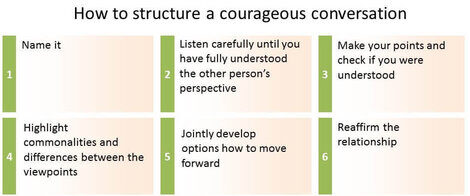
Courageous
Conversations
Conversations
What are courageous conversations?
Here are some examples of the types of work-related conversations that many of us find difficult and that take courage to conduct.
- Giving Feedback
- Negotiating
- Setting Boundaries
- Advocating for yourself
- Holding someone accountable
- Challenging an opposing viewpoint
Find out why having these conversations is important.
Petra Rees, your coach
and workshop facilitator
Petra Rees, your coach
and workshop facilitator
